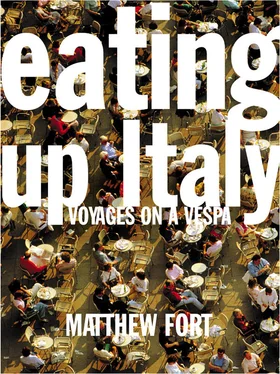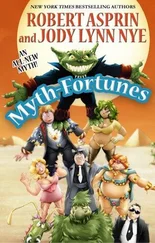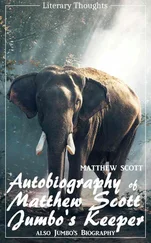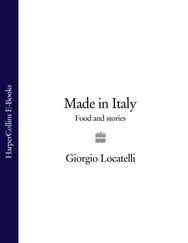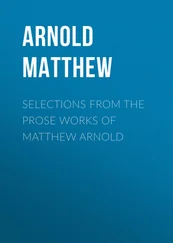The difference between sugo and ragù had been something of a mystery to me, but Signora Cappello briskly cleared this up for me.
‘Normally sugo is simply tomato sauce, and ragù is a sauce with meat in it, like a ragù bolognese, but down here ragù is a bit different. First I make a soffritto (the great Mediterranean base flavour of onions, or onions and garlic, stewed in olive oil). Then I put a piece of beef and a piece of pork on top, then add the tomatoes. Now I let it bubble quietly for four hours or more. The meat is kept nice and moist, but also it gives up some of its flavour to the sauce. So you can eat your pasta with the sugo, and then eat the meat as the secondo piatto. It is a very practical way to cook, no?’
‘Yes,’ I said.
Braised lamb with potatoes came next. ‘It must be pecora – ewe,’ said Signora Cappello with the certainty of an ex cathedra Papal bull. ‘It is more tender and tastier than agnello – ram.’ For a moment I wondered if, like swordfish, it was più amorosa as well.
Then there was a salad of Romaine lettuce and fennel; involtini di vitello, thin slices of veal stuffed with breadcrumbs, parsley, garlic, Parmesan and then grilled; fried artichoke, which had been sliced, dipped in egg and breadcrumbs, and fried; and a classically unctuous melanzane alla parmigiana – ‘The melanzane must to be female,’ said Signora Cappello, which prompted a long discussion about how you can tell whether a melanzana is female or not.
My mental grip rather loosened by too much of everything, I foolishly suggested to Signora Cappello that it was inevitable that even in Italy traditional cooking and eating habits would gradually become like those of the rest of the world, manufactured and microwavable.
‘Never!’ she replied with considerable force.
‘But,’ I pointed out, ‘neither of your two daughters cook. Both of them have responsible jobs during the day. So who will have time to shop, harangue the shopkeepers and cook in this way?’
‘I will,’ she said, in the same tone of voice as before. Unquestionably she would, but I wondered about the rest of Italy.
Finally we came to la pastiera, the classic Easter tart made with ricotta, pecorino, grano (a special wheat) soaked in milk, eggs, tiny pieces of candied peel, custard, a little mandarino liqueur and the beaten white of an egg. It was rich, but, thank God, comfortingly light.
Even the Calabresi don’t eat on this scale very often, but in the light of this trial by calorie it struck me that northern Europeans have a rather distorted view of what we loosely call Mediterranean cooking. We have been led to believe that the Mediterranean diet is light and healthy, made up mostly of vegetables, pulses and olive oil with a few grilled dainties by way of protein. Actually, with its roots in a recent, and in many cases contemporary, peasant culture, it is hearty, hefty, filling and loaded with carbohydrates. If you have spent the day in the fields under the broiling sun, the last thing you want is a plate of tomato and mozzarella followed by a grilled sardine and salad. You want something to fill you up. And by the same token, on high days and holidays, you celebrate the richness of your larder, not its meagreness.
By the time we had finished, it was definitely the moment for the armchair, the paper over the face and the long snooze. Instead of which, Silvia badgered me into another of the great Italian traditions, la passeggiata, the stroll through public places, the leisurely tread along a prescribed path. This is a quite different ritual from walking in Britain. We British go for walks, mostly in the country. It’s an expedition. It has an objective and a specified time frame. We even wear special clothes (usually because it’s cold, muddy or raining or all three). The Italians also wear special clothes, but they are the marks of civilisation, designed for display. The Italian passeggiata is purely social. Normally it is framed by the end of the workday and dinner. It signifies that the tyranny of labour is over for the day, to be replaced by the tyranny of the family, but it has no purpose other than to show, to meet and to talk; in particular to talk.
That night I lay on the bed in my hotel, marvelling at the size of my stomach and the gastronomic riches I had already uncovered, and contemplating what lay before me. I began to feel decidedly queasy.
It was clear that I should have done this odyssey when I was twenty-five, or even younger, rather than fifty-five. The notion of riding a scooter through sun-drenched landscapes was essentially a romantic one. It went with a sense of freedom, adventure, personal exploration and sexual possibilities; wind in the hair, sun on the back, the road winding down to the sea, unknown delights around every corner. It fitted less easily with the trembling jowl, thinning hair, spectacles, a tendency of the stomach to flow over the top of the trouser, deficiencies of short-term and long-term memory, job, wife, child, mortgage, responsibility and all the other clutter of humdrum existence.
From the orderly safety of home, the journey had seemed so sensible, so straightforward, so intelligently structured. I had read Old Calabria by Norman Douglas, after all, the old goat’s account of his ramblings all over the region at the beginning of the twentieth century. I had been caught up by his enthusiasm and his perceptions on the nature of place. The range of his reading and knowledge continually astounded me, from reports on depopulation in rural areas to the Flying Monk, Father Joseph of Copertino, from the etymological harvests of his bed (‘which surpassed my wildest expectations’) to the consequences of the great earthquake of 1908 in Reggio di Calabria. The entertaining detail, the informed observation, the odd connection, nothing escaped the energy of his prodigiously curious mind, framed in prose that was elegant, masterly, humorous, at ease with itself. True, he did not have much to say about food, but, I had thought, what an example to follow.
Now I saw all too clearly that my breezy insouciance was chronically misplaced. Faced with the reality of diversity of the country, the inadequacy of my personal resources – not very good Italian, scooter terror, and cursory research and preparation – I found the reality of my undertaking, frankly, terrifying. And it was raining. It had rained since I had arrived. It looked as if it would rain for ever. It was less of Chaucer’s ‘Whan that Aprill with his shoures soote The droghte of March hath perced to the roote’ and more of the kind of weather with which Noah had been familiar. Worse still, it had forced me to postpone my rendezvous with my Vespa, and take to a car instead. I had had a memory of a limpid Mediterranean shimmering like a dragonfly’s wing beneath skies of eggshell blue, of cheap wine and primal flavours, of heat soaked into the bones of my body, of singing crickets and long siestas. But that April the skies were the same colour as those in Britain in a particularly damp March, and there was a stiff, chill wind.
Still on the morrow, come hell or high water, and there was a good chance of both, I would collect the scooter and head north. But suddenly a great wave of missing family, familiarity, hearth and home washed through me. It’s an odd thing, but the great travel writers or explorers don’t give much time to homesickness. There’s not a lot of it in the works of Norman Lewis or Eric Newby or Wilfred Thesiger. Sir Ranulph Fiennes doesn’t seem to give it another thought, and it never seems to occur to Redmond O’Hanlon or William Dalrymple or Paul Theroux, ‘Oh gosh, I wish I was at home doing the washing up right now.’ Didn’t they ever feel it? Had Michael Palin never wanted to sob into his pillow when he was making around-the-world documentaries or David Attenborough wished he’d just stayed at home to walk the dog? Well, I did.
Читать дальше
